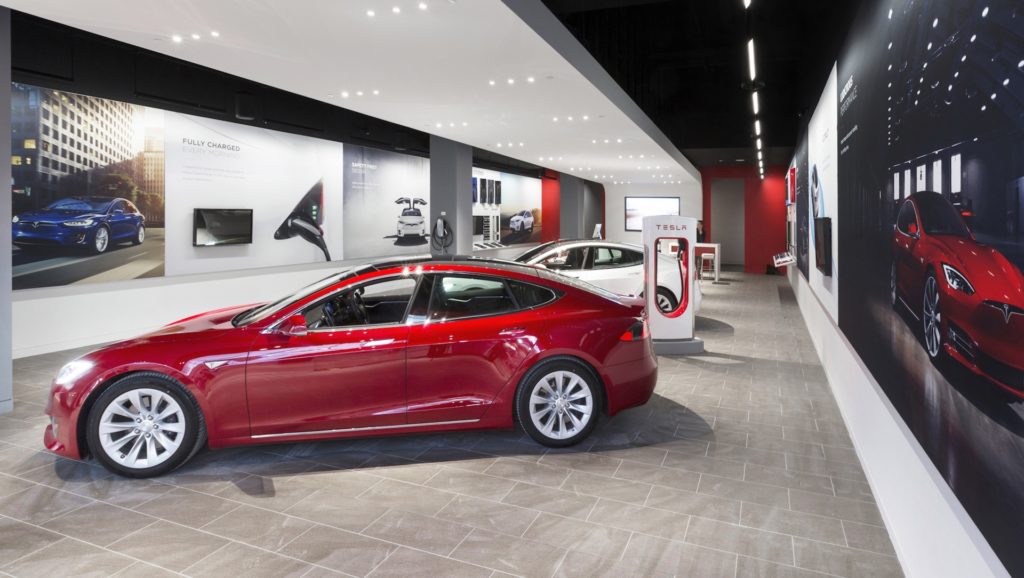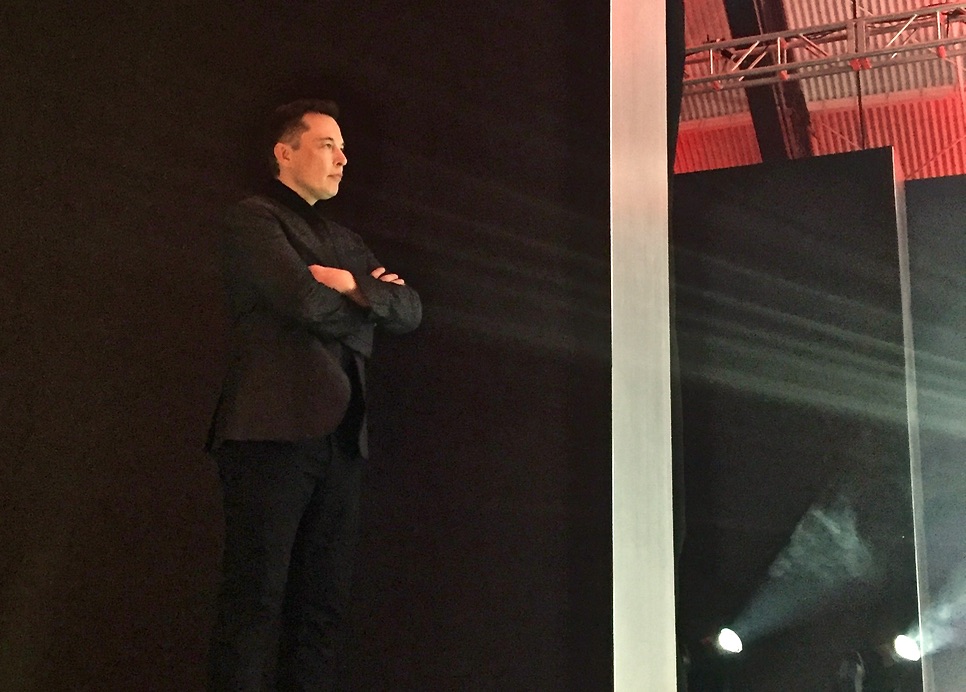
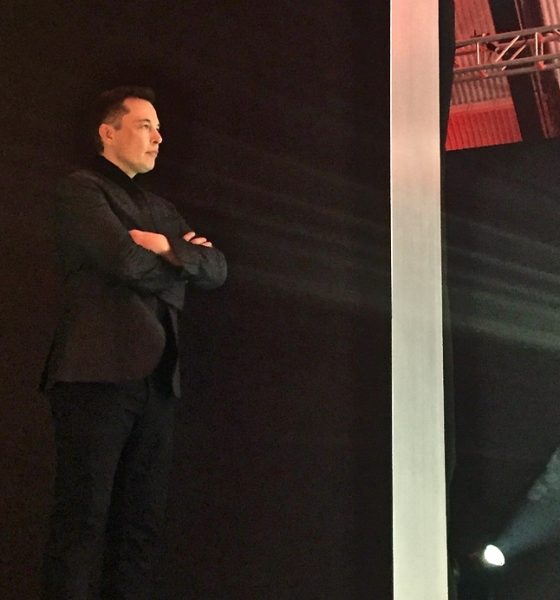
Investor's Corner
The epic battle between Elon Musk and the Tesla haters
In a fascinating article in Institutional Investor, Michelle Celarier writes that Tesla [NASDAQ: TSLA] is: “the biggest short in the U.S. market; about 27 percent of Tesla’s free float is short, for a value as high as $10 billion” according to S3 Analytics, a firm that tracks short sales. That said, “the stock has soared more than 1,300 percent since Tesla went public in 2010. It is the first automaker to go public since Ford in 1956, making it one of the darlings of the post-financial-crash bull market.”
It turns out that one of the most notorious Tesla shorts is Mark Spiegel. And Spiegel hasn’t even driven a Tesla yet. He says, “I’m more into sports cars.” According to Celarier, “Spiegel has become something of a zealot on Tesla. His small hedge fund, Stanphyl Capital Management, runs a mere $8.5 million, given that it was down 20 percent this year through August. That’s largely due to his short of Tesla, which had gained 74 percent this year, making it the worst-performing short of the year.”
However, there are bigger players out there shorting Tesla. Celarier reports that: “Everyone who’s anyone in Wall Street’s small and clubby world of short sellers has been short Tesla at one point or another… In the past, some of them also shorted Google and Amazon — other high flyers who weren’t making a profit — and somewhat sheepishly [now] admit they were wrong. Clearly, these guys are not dreamers from California’s La La Land, and Musk’s grand plans and his ‘save the world’ ethos can elicit a few eye rolls.”
Another well-known Tesla short, James Chanos of Kynikos Associates, “has been railing against Tesla for at least two years on CNBC and at numerous conferences. He has gone so far as to call Tesla a cult.” Speaking of Tesla’s CEO Elon Musk, Chanos proclaims, “People want to believe he’s some sort of visionary… In a milieu of boring people, they think he is changing the world. He’s not boring. He’s somebody they can attach their hopes and dreams to.”
So why does Tesla attract so many arguments on Wall Street? On the one hand, “Looking at its balance sheet, Tesla is [considered] the perfect short. But its pioneering status in an industry facing wrenching technological upheaval, and its charismatic CEO, has won it legions of admirers and turned it into a battleground stock. Sure, Tesla’s lofty stock price makes it a risky buy — but also a perilous short.”
Anger and hope permeate both camps of investors. “Short sellers berate Tesla investors as momentum chasers, tree-huggers, or simply Elon Musk groupies, but these investors have bought into a vision that has already made great leaps toward building a sustainable energy ecosystem — a costly endeavor that has no shortage of well-heeled enemies.”
And while an army of short sellers persist, plenty of Wall Street’s power players remain steadfast Tesla longs: “The biggest holders, aside from Musk, are mutual funds like Fidelity Investments, which has owned the stock since the IPO. With a current 12.8 percent stake (down from a high of 15 percent), the mutual fund giant is the largest institutional investor in Tesla, and portfolio manager Kyle Weaver says Fidelity has a long-term perspective on the company that is playing out largely as expected.”
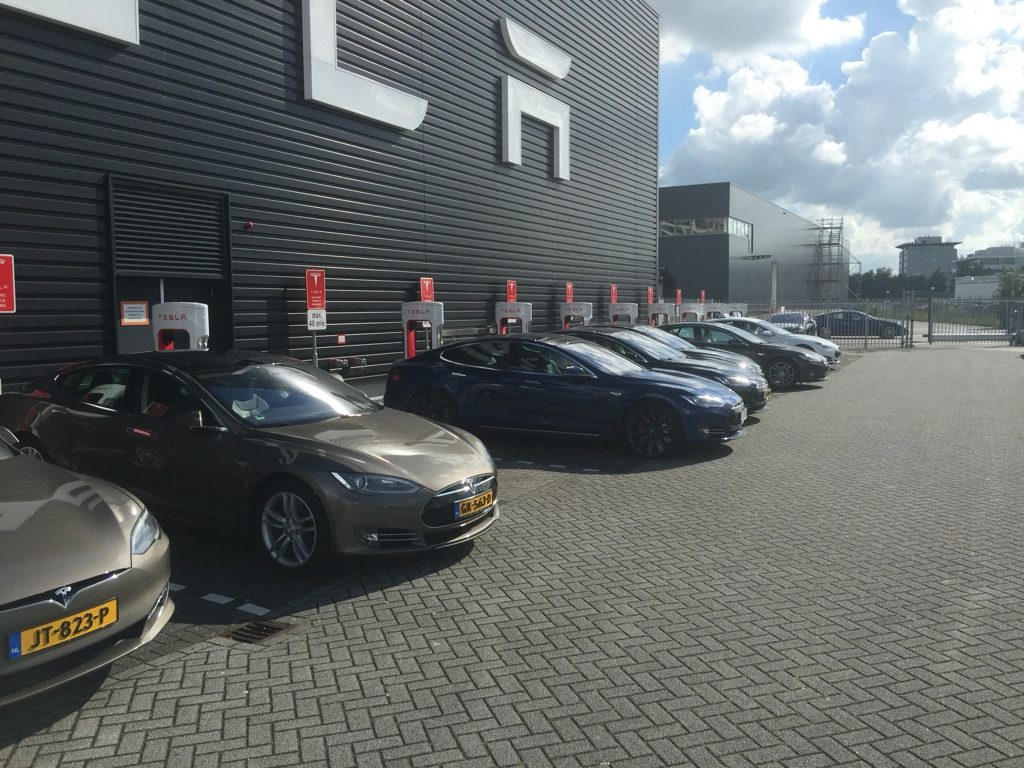
Tesla fleet lined up outside of the service center in Amsterdam [Photo credit: Teslarati App]
“It was the worst short I’ve ever had,” says Whitney Tilson, managing partner of Kase Capital Management, who was short when the stock went from $35 to $205. Last month, Tilson told investors he’s shutting down his funds due to poor performance. Tilson explains, “I can do the numbers and see how much money the company is losing, but you’re short an incredibly maniacally driven CEO, with maniacally driven engineers assaulting the world’s largest industry. If they succeed, Tesla could be a $400 billion market cap company.”“The internal combustion engine is toast long term. It’s game over. The costs of making an internal combustion engine do not go down, while the cost of battery technology has gone down every year,” says Fidelity’s Weaver. “The secular trends that will drive Tesla’s fundamentals are a decades-long trend.” He also applauds Tesla’s environmental mission, “I don’t want to bet against that in an emotional sense.”
Musk is also not afraid to openly attack Wall Street’s short sellers. Let’s not forget, “Musk, who has talked about being bullied as a child, seems to delight in taunting his tormentors. In 2013 he gloated on Twitter, ‘Seems to be some stormy weather over in Shortville these days,’” and once cautioned short sellers that a “tsunami of hurt” was coming in a televised interview.
Celarier writes, “To be sure, a mania surrounds Tesla… [and] betting against Musk is a tough proposition. Tesla has already survived near-bankruptcy events, and Musk has plenty of friends in tech companies with much higher valuations, like Larry Page at Google, that could afford to partner with Tesla or take it over. (Google had struck a handshake deal to buy Tesla during a near-death moment in 2013, according to Vance’s biography.)”
There’s also massive opportunity for Tesla in China: “Earlier this year, China’s Tencent Holdings took a 5 percent stake in Tesla. China is proposing to mandate a zero-emissions standard in 12 percent of new cars by 2020 and is considering letting wholly owned foreign electric-car companies operate there. The Chinese market is expected to be huge, and Tesla is charging ahead there. It is already building a new supercharger network in the country and plans to both build and sell cars there.”
Such realities make shorting Tesla, for all its financial shortcomings, a difficult call. As Tilson puts it, “I don’t want to be short open-ended situations. The tail risk is just too high.”
===
Note: Article by Matt Pressman, originally published on evannex.com
Source: Institutional Investor

Investor's Corner
Tesla gets bold Robotaxi prediction from Wall Street firm
Last week, Andrew Percoco took over Tesla analysis for Morgan Stanley from Adam Jonas, who covered the stock for years. Percoco seems to be less optimistic and bullish on Tesla shares, while still being fair and balanced in his analysis.
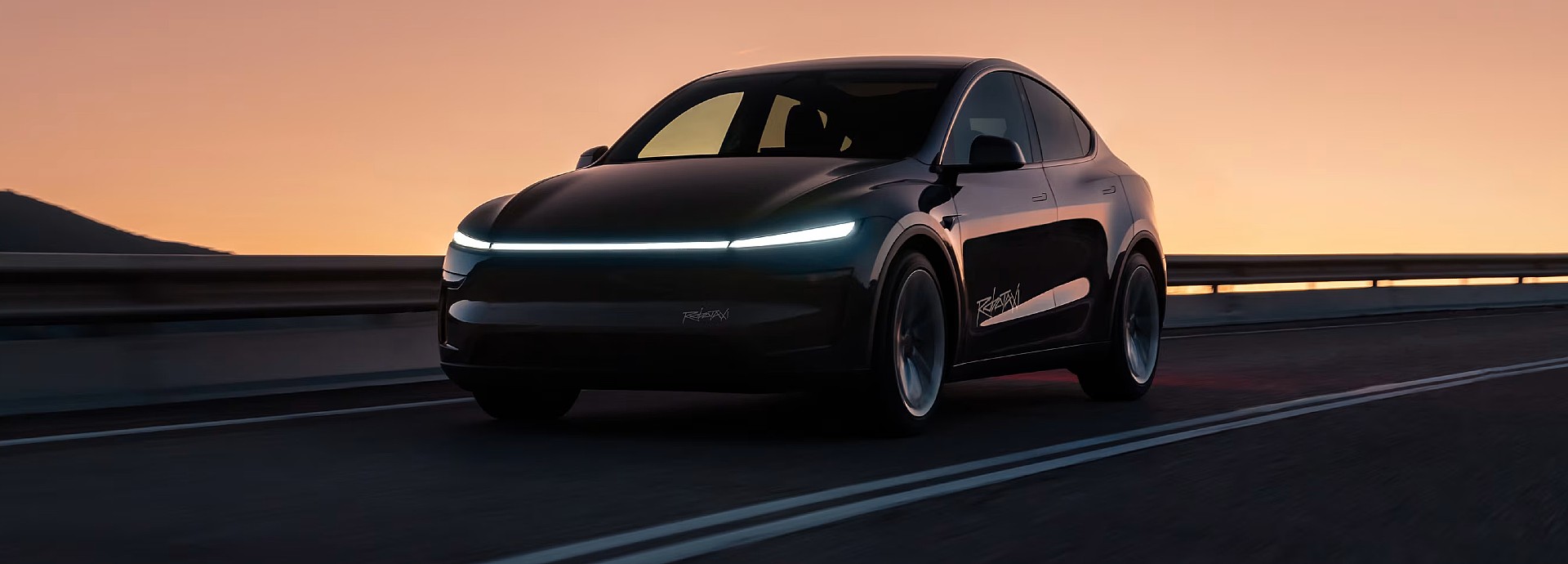
Tesla (NASDAQ: TSLA) received a bold Robotaxi prediction from Morgan Stanley, which anticipates a dramatic increase in the size of the company’s autonomous ride-hailing suite in the coming years.
Last week, Andrew Percoco took over Tesla analysis for Morgan Stanley from Adam Jonas, who covered the stock for years. Percoco seems to be less optimistic and bullish on Tesla shares, while still being fair and balanced in his analysis.
Percoco dug into the Robotaxi fleet and its expansion in the coming years in his latest note, released on Tuesday. The firm expects Tesla to increase the Robotaxi fleet size to 1,000 vehicles in 2026. However, that’s small-scale compared to what they expect from Tesla in a decade.
Tesla expands Robotaxi app access once again, this time on a global scale
By 2035, Morgan Stanley believes there will be one million Robotaxis on the road across multiple cities, a major jump and a considerable fleet size. We assume this means the fleet of vehicles Tesla will operate internally, and not including passenger-owned vehicles that could be added through software updates.
He also listed three specific catalysts that investors should pay attention to, as these will represent the company being on track to achieve its Robotaxi dreams:
- Opening Robotaxi to the public without a Safety Monitor. Timing is unclear, but it appears that Tesla is getting closer by the day.
- Improvement in safety metrics without the Safety Monitor. Tesla’s ability to improve its safety metrics as it scales miles driven without the Safety Monitor is imperative as it looks to scale in new states and cities in 2026.
- Cybercab start of production, targeted for April 2026. Tesla’s Cybercab is a purpose-built vehicle (no steering wheel or pedals, only two seats) that is expected to be produced through its state-of-the-art unboxed manufacturing process, offering further cost reductions and thus accelerating adoption over time.
Robotaxi stands to be one of Tesla’s most significant revenue contributors, especially as the company plans to continue expanding its ride-hailing service across the world in the coming years.
Its current deployment strategy is controlled and conservative to avoid any drastic and potentially program-ruining incidents.
So far, the program, which is active in Austin and the California Bay Area, has been widely successful.
Investor's Corner
Tesla analyst realizes one big thing about the stock: deliveries are losing importance
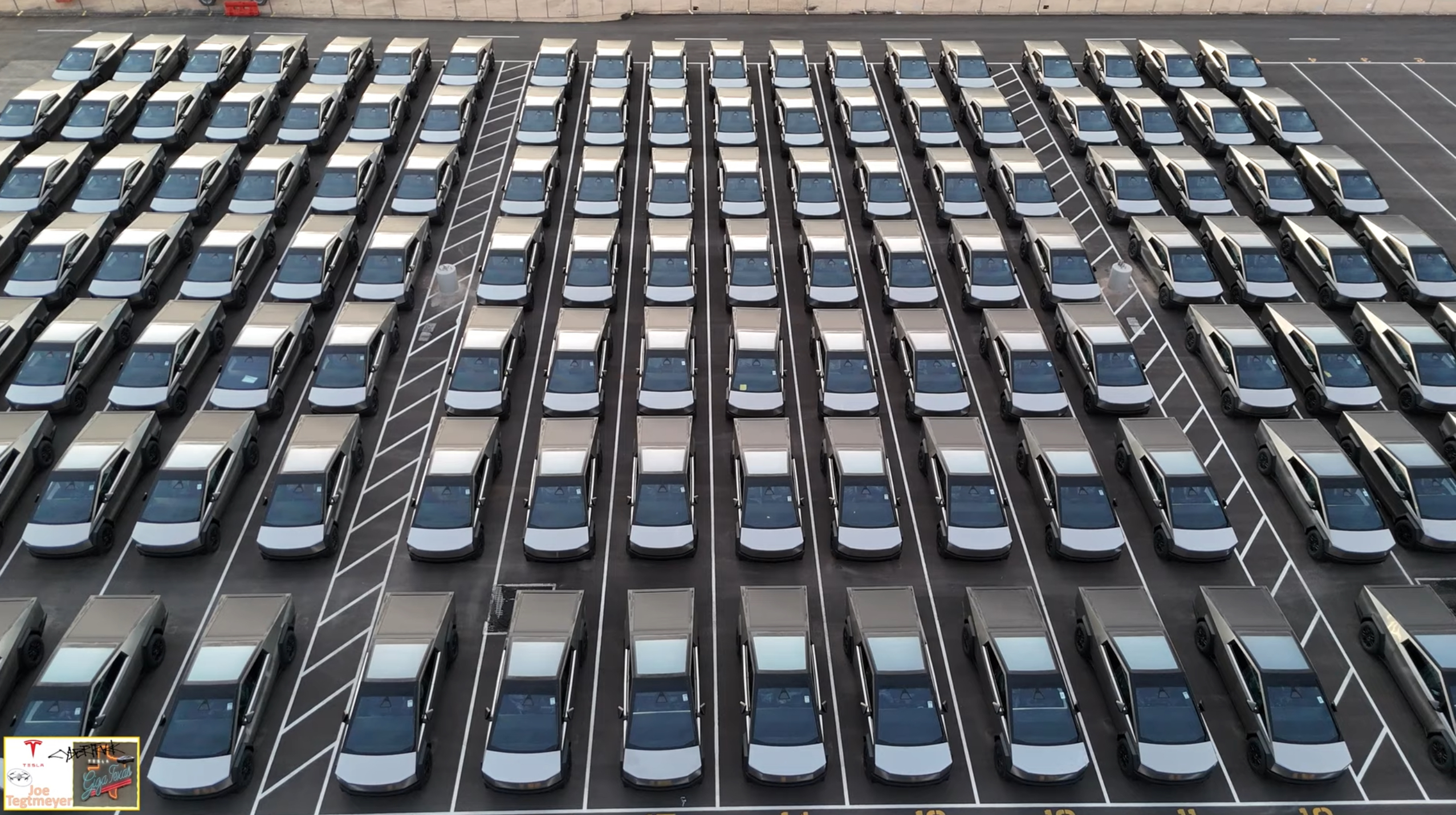
Tesla analyst Dan Levy of Barclays realized one big thing about the stock moving into 2026: vehicle deliveries are losing importance.
As a new era of Tesla seems to be on the horizon, the concern about vehicle deliveries and annual growth seems to be fading, at least according to many investors.
Even CEO Elon Musk has implied at times that the automotive side, as a whole, will only make up a small percentage of Tesla’s total valuation, as Optimus and AI begin to shine with importance.
He said in April:
“The future of the company is fundamentally based on large-scale autonomous cars and large-scale and large volume, vast numbers of autonomous humanoid robots.”
Almost all of Tesla’s value long-term will be from AI & robots, both vehicle & humanoid
— Elon Musk (@elonmusk) September 11, 2023
Levy wrote in a note to investors that Tesla’s Q4 delivery figures “likely won’t matter for the stock.” Barclays said in the note that it expects deliveries to be “soft” for the quarter.
In years past, Tesla analysts, investors, and fans were focused on automotive growth.
Cars were truly the biggest thing the stock had to offer: Tesla was a growing automotive company with a lot of prowess in AI and software, but deliveries held the most impact, along with vehicle pricing. These types of things had huge impacts on the stock years ago.
In fact, several large swings occurred because of Tesla either beating or missing delivery estimates:
- January 3, 2022: +13.53%, record deliveries at the time
- January 3, 2023: -12.24%, missed deliveries
- July 2, 2024: +10.20%, beat delivery expectations
- October 3, 2022: -8.61%, sharp miss due to Shanghai factory shutdown
- July 2, 2020: +7.95%, topped low COVID-era expectations with sizeable beat on deliveries
It has become more apparent over the past few quarters that delivery estimates have significantly less focus from investors, who are instead looking for progress in AI, Optimus, Cybercab, and other projects.
These things are the future of the company, and although Tesla will always sell cars, the stock is more impacted by the software the vehicle is running, and not necessarily the vehicle itself.
Investor's Corner
SpaceX IPO is coming, CEO Elon Musk confirms
However, it appears Musk is ready for SpaceX to go public, as Ars Technica Senior Space Editor Eric Berger wrote an op-ed that indicated he thought SpaceX would go public soon. Musk replied, basically confirming it.

Elon Musk confirmed through a post on X that a SpaceX initial public offering (IPO) is on the way after hinting at it several times earlier this year.
It also comes one day after Bloomberg reported that SpaceX was aiming for a valuation of $1.5 trillion, adding that it wanted to raise $30 billion.
Musk has been transparent for most of the year that he wanted to try to figure out a way to get Tesla shareholders to invest in SpaceX, giving them access to the stock.
He has also recognized the issues of having a public stock, like litigation exposure, quarterly reporting pressures, and other inconveniences.
However, it appears Musk is ready for SpaceX to go public, as Ars Technica Senior Space Editor Eric Berger wrote an op-ed that indicated he thought SpaceX would go public soon.
Musk replied, basically confirming it:
As usual, Eric is accurate
— Elon Musk (@elonmusk) December 10, 2025
Berger believes the IPO would help support the need for $30 billion or more in capital needed to fund AI integration projects, such as space-based data centers and lunar satellite factories. Musk confirmed recently that SpaceX “will be doing” data centers in orbit.
AI appears to be a “key part” of SpaceX getting to Musk, Berger also wrote. When writing about whether or not Optimus is a viable project and product for the company, he says that none of that matters. Musk thinks it is, and that’s all that matters.
It seems like Musk has certainly mulled something this big for a very long time, and the idea of taking SpaceX public is not just likely; it is necessary for the company to get to Mars.
The details of when SpaceX will finally hit that public status are not known. Many of the reports that came out over the past few days indicate it would happen in 2026, so sooner rather than later.
But there are a lot of things on Musk’s plate early next year, especially with Cybercab production, the potential launch of Unsupervised Full Self-Driving, and the Roadster unveiling, all planned for Q1.
